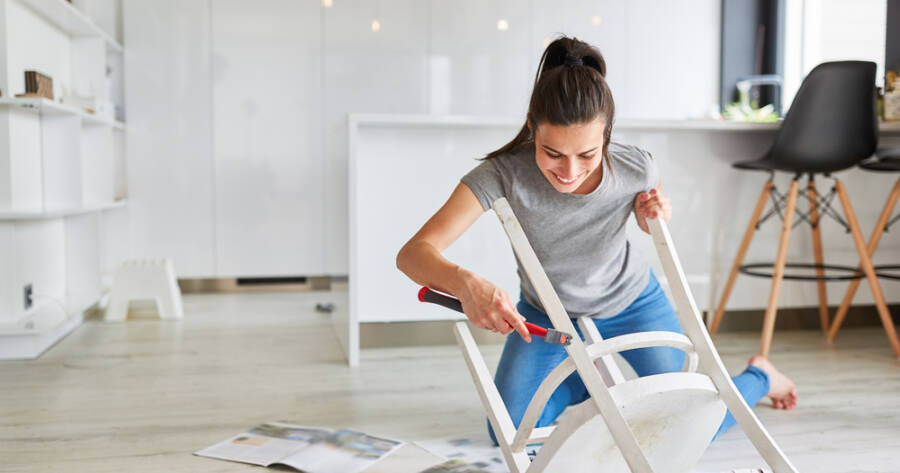In a world increasingly focused on sustainability, upcycling old furniture is gaining popularity as a creative, eco-friendly alternative to buying new. By transforming outdated pieces into stylish, functional items, you might not only reduce waste but also enhance your home’s aesthetic in a unique way. Whether you’re a novice or an experienced do-it-yourselfer, exploring ways to rejuvenate old furniture could offer both artistic satisfaction and practical benefits.
The Benefits of Upcycling Furniture
Refurbishing vintage or discarded furniture offers numerous environmental and personal advantages. By keeping old pieces out of landfills, you may contribute to a more sustainable environment.
Upcycling also allows for personalization, helping create decor that truly reflects your style. Additionally, working on such projects might foster creativity and improve crafting skills, providing a satisfying sense of accomplishment upon completion.
Choosing the Right Furniture
Selecting suitable pieces is essential for successful upcycling. Consider solid structures with quality materials like hardwood, which are more durable and easier to restore.
Look for promising yard sales or thrift store finds that could be reimagined with a little care and creativity. However, it’s wise to ensure the furniture is free from major damage like termite infestation or severe structural issues that could hinder the project.
Tools and Materials You Might Need
Having the right tools can make your upcycling projects smoother and more enjoyable. Essential items often include sandpaper, paintbrushes, and screwdrivers, which help in basic restoration and modification tasks.
Depending on the complexity, you could also explore using power tools like drills or saws, but always remember to follow safety guidelines. Investing in quality paint, fabric, or hardware can also be worth considering for a polished finish.
Popular Upcycling Techniques
There are various techniques that can bring an old piece of furniture to life. Some popular methods are:
- Painting and staining: Changing the color or sheen with paint or stain can dramatically alter an item’s appearance. Try considering chalk paint for a vintage look or bold eco-friendly options for something contemporary.
- Reupholstering: For chairs or sofas, replacing old fabric with new, stylish upholstery can revamp a piece, making it comfortable and appealing.
- Decoupage: A method where paper is used to cover surfaces and then sealed with varnish to create intricate or whimsical designs.
- Distressing: This technique involves making new furniture look weathered and worn, adding character and charm, potentially suiting rustic or shabby chic interiors.
Step-by-Step Upcycling Project: Transforming an Old Dresser
One simple yet transformative project could be turning an old dresser into a customized storage unit.
- Preparation: Start by removing existing hardware and sanding down surfaces to remove varnish or blemishes. Make sure to wipe the piece clean to remove any dust or residue.
- Painting: Apply a primer if needed, followed by your paint of choice. Consider using a roller for larger areas and a brush for smaller, detailed work.
- Adding new hardware: Replace old drawer handles with modern, stylish options that align with your desired aesthetic.
- Finishing touches: Once the paint is dry, apply a sealant to protect the finish. Add personal touches like stenciling designs or lining drawers with decorative paper.
Creative Ideas for Unusual Pieces
Creativity in upcycling often means thinking outside the box. An old ladder could serve as a stylish bookshelf, or a vintage door might transform into a rustic dining table.
Overturned crates could potentially become wall shelves, showcasing the ability to look beyond the conventional form and function of an item. Such inventive repurposing not only gives new life to unused items but also adds character to your home in unexpected ways.
Eco-Friendly and Cost-Effective
Beyond aesthetic improvements, upcycling supports eco-friendliness and can be cost-effective. By choosing discarded or second-hand furniture and materials, you may substantially reduce the cost compared to purchasing brand-new items.
With some resourcefulness, upcycling might present a way to contribute to a circular economy, where resources are continuously reused instead of discarded.
Learn More Today!
Upcycling old furniture is a delightful blend of creativity, sustainability, and practicality, offering multiple benefits for both the individual and the environment. By giving existing furniture a new lease on life, homes can be adorned in personal, distinctive ways without contributing to landfill waste.
Though success in these projects varies depending on numerous factors, the process of upcycling could provide a rewarding experience of creativity and environmental stewardship, enriching your home one piece at a time.

